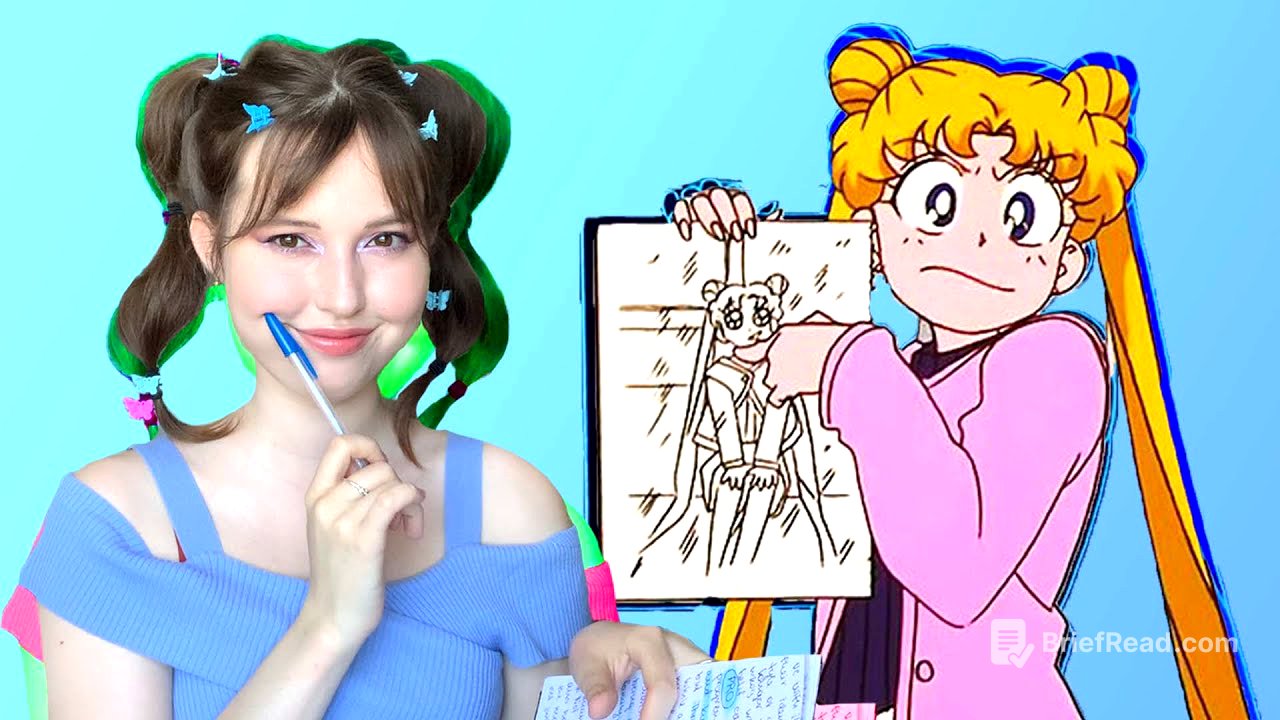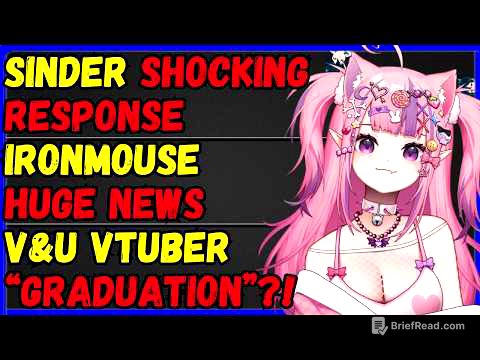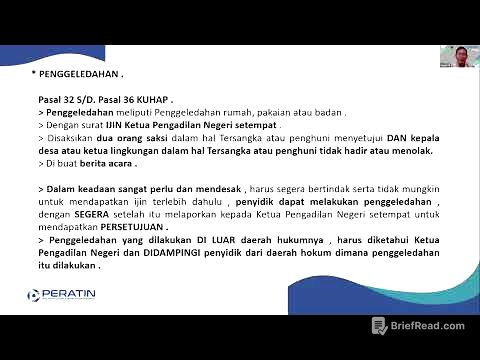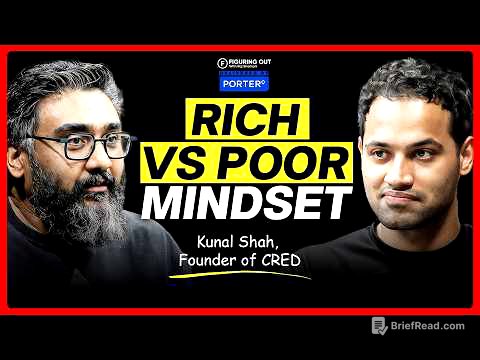TLDR;
This video reviews the 90s Sailor Moon anime, referencing the manga and Crystal versions. It covers art aspects like setting design and coloring techniques, animation consistency, transformation sequences, choreography, and sound design. It also discusses the show's comedy, relationships, villains, and the final season. The review also touches on fashion, magical objects, and the show's lore, while also pointing out issues like age differences in relationships, body shaming, and power inconsistencies.
- Art and design are praised for setting, color, and iconic transformations.
- The show has some problematic elements like age differences in relationships and body shaming.
- Villains are well-developed, and the final season is strong.
Intro [0:10]
The video introduces a review of the 90s Sailor Moon show, incorporating references from the manga and Sailor Moon Crystal. The review will be divided into four sections, each introduced as it begins.
Art Aspects: Pros and Cons [0:28]
The show's setting design is a significant pro, with visually appealing cityscapes and watercolor-like stills, especially for Haruka and Michiru's scenes. The use of pastel colors for concrete and detailed setup shots enhances the show's aesthetic. However, animation inconsistency is a con due to different directors working on episodes, leading to variations in art style. Despite this, the consistent art direction, color palettes, and set designs maintain a cohesive look.
Coloring Techniques and Transformation Sequences [4:20]
The coloring techniques, relying on color theory and bright colors, are a pro, demonstrated in episode 42 where Minako tells Usagi about her experience in England. The show uniquely combines bright colors to represent different environments, maintaining color vibrancy even in darker scenes. Transformation sequences are iconic and popularized the magical girl genre, celebrating femininity and empowering girls.
Choreography, Scene Blocking, and Voyeuristic Shots [12:02]
Excellent choreography and scene blocking are a pro, though sometimes inconsistent. While most senshi attacks have weight and power, some scenes suffer from poor implementation, like the creepy sliding scene with Mamoru. Upskirt shots and voyeuristic camera angles are a con, making some scenes uncomfortable and unnecessary.
Soundtrack and Slapstick Comedy [17:50]
The soundtrack, sound effects, and overall sound design are a pro, with iconic and memorable melodies that enhance the viewing experience. The show's slapstick comedy and comedic timing are fantastic, with well-delivered lines and effective animation.
Shallow Relationships and Prioritization of Romance [27:23]
A significant con is the shallow relationships with guys often taking priority over friendships and family. The show inconsistently treats friendships, sometimes trivializing them and other times emphasizing their importance. There are instances where characters criticize girls' friendships, which is problematic.
Dangerous Messaging About Romance [33:57]
The show presents dangerous messaging about romance, particularly in the parallel between Usagi and Mamoru and Koan and Rubeus. Both women are treated poorly, with the show normalizing cruel and abusive behavior. Rei's advice to believe in a partner despite cold treatment is also concerning.
Villains and the Final Season [38:23]
The villains are a pro, with well-developed characters and redemption arcs, especially for the Spectre Sisters and Prince Dimande. Sailor Stars, the final season, is fantastic, introducing new characters and high stakes that provide a satisfying conclusion.
Lost Potential of Mamoru and Usagi & Age Differences [42:58]
The lost potential of Mamoru and Usagi's relationship is a con, mishandled in both the anime and manga. The anime adaptation exacerbates this with a significant age difference, normalizing inappropriate relationships. Examples include Minako, Mako, and the principal; Naru and Nephrite; Usagi and Mamoru; and Chibiusa and Pegasus.
Filler Episodes and Masculinity Issues [52:54]
Filler episodes are a pro, allowing for character development, especially for Haruka and Michiru. However, weird masculinity issues and questionable morals are a con, exemplified by Usagi's father's reckless driving and men only helping women they are attracted to.
End of Season One and Creepy Scenes [56:27]
The end of season one is an interesting point, with characters dying and a touching reincarnation. However, creepy and unsettling scenes, like Usagi's underwear comment, are a con.
Unsettling Dynamics and Michiru and Haruka [58:53]
The unsettling dynamics between Chibiusa, Mamoru, and Usagi are a significant con, poorly handled by the creators. In contrast, Michiru and Haruka's relationship flips the script, with Michiru often taking Haruka off guard and being the more daring of the two.
Erasure of Character and Fashion Choices [1:03:48]
The erasure of character for some of the main cast, particularly Minako, is a con, as she deserves more responsibility and power. Fashion choices and iconic designs are a pro, with stylish and realistic outfits that capture the essence of the 90s.
Tuxedo Mask's Outfit and Girliness of Attacks [1:07:16]
Tuxedo Mask's outfit is a con, particularly the mask and top hat. The unapologetic girliness of the attacks and magical artifacts is a pro, celebrating hyper-feminine energy and empowering those who like fashion, makeup, and glitter.
Amazon Quartet Design and Magical Objects [1:08:11]
The Amazon Quartet's design is a con, as they are drawn as grown women despite being children. Magical object designs are a pro, with a rich variety of iconic objects that enhance the show's lore.
Rich References and Show's Pacing [1:11:34]
Rich references, innovative attacks, and beautiful lore are a pro, with attacks and magical objects inspired by various mythologies. The show's pacing is a con, with overused elements like Usagi's crying making some episodes difficult to watch.
Power Ups and Unrealistic Who's Who [1:15:12]
Power-ups and new attacks are a pro, exciting for viewers to see their favorite characters grow stronger. The unrealistic "who's who" scenarios, where characters fail to recognize obvious alter egos, are a con.
LGBTQ+ Couples and Inconsistency of Power [1:16:48]
LGBTQ+ couples are a pro, with progressive representation through characters like Zoisite and Kunzite, Haruka and Michiru, and the Three Lights. The inconsistency of power is a con, with illogical moments where weaker characters surpass stronger ones without explanation.
Usagi's Role and Fun Sources of Magic [1:20:16]
Usagi's need to finish every monster of the week is a con, as it undermines the other Senshi's roles. Fun and weird sources of magic are a pro, with different types of evil and powers in each season.
Body Shaming and Usagi's Independence [1:23:16]
Body shaming and unhealthy views on dieting are a con, particularly in the "Slim City" episode. Usagi's independence and refusal to conform to societal expectations are a pro, as she continues to do her own thing despite others' opinions.
Conclusion [1:25:52]
In conclusion, Sailor Moon is a great show with some problematic elements due to the era it was created in. However, adults with critical thinking can enjoy it for its art, innovation, characters, and magic. It is a must-watch for animation enthusiasts and a classic for anyone who enjoys the genre.









